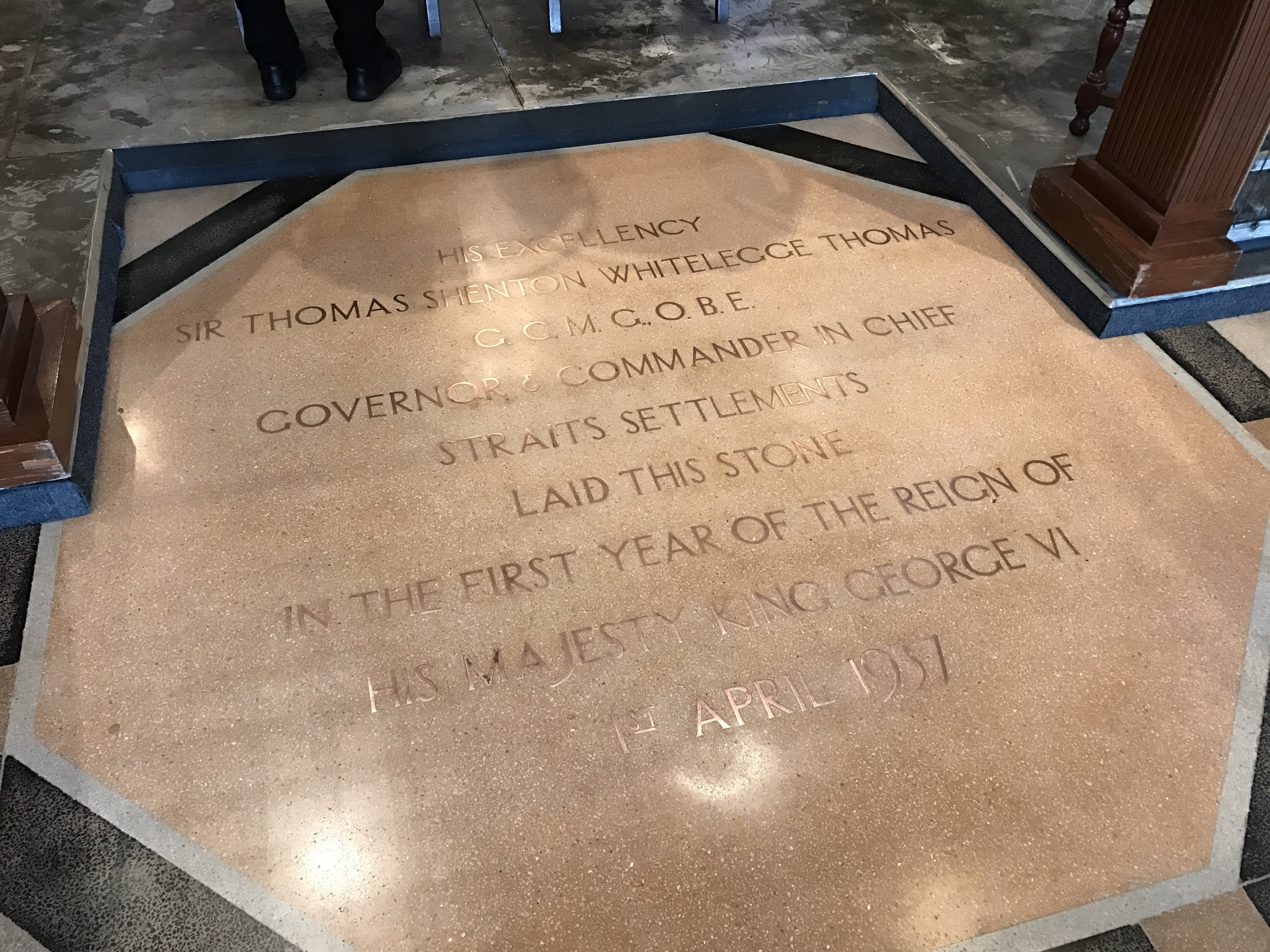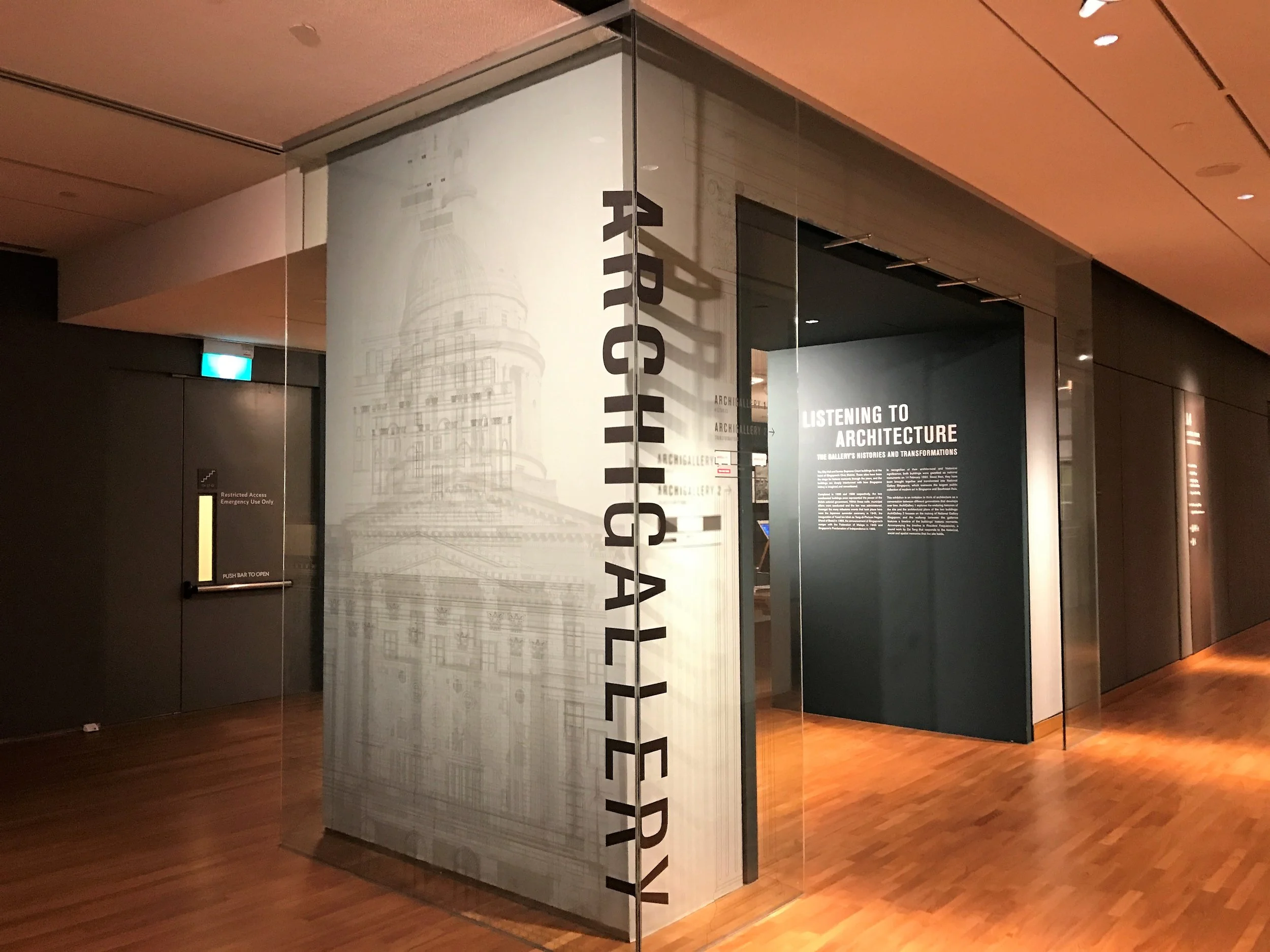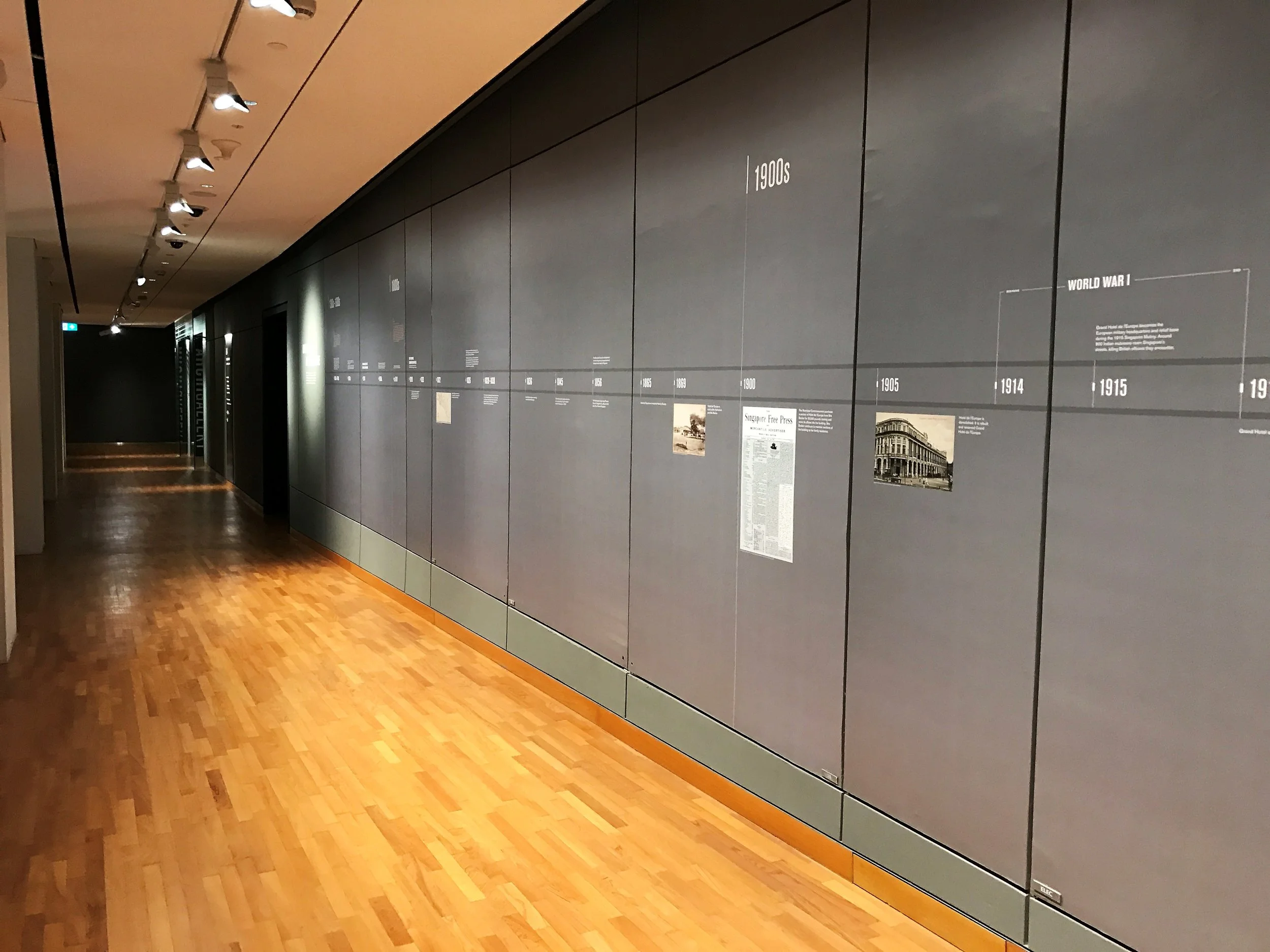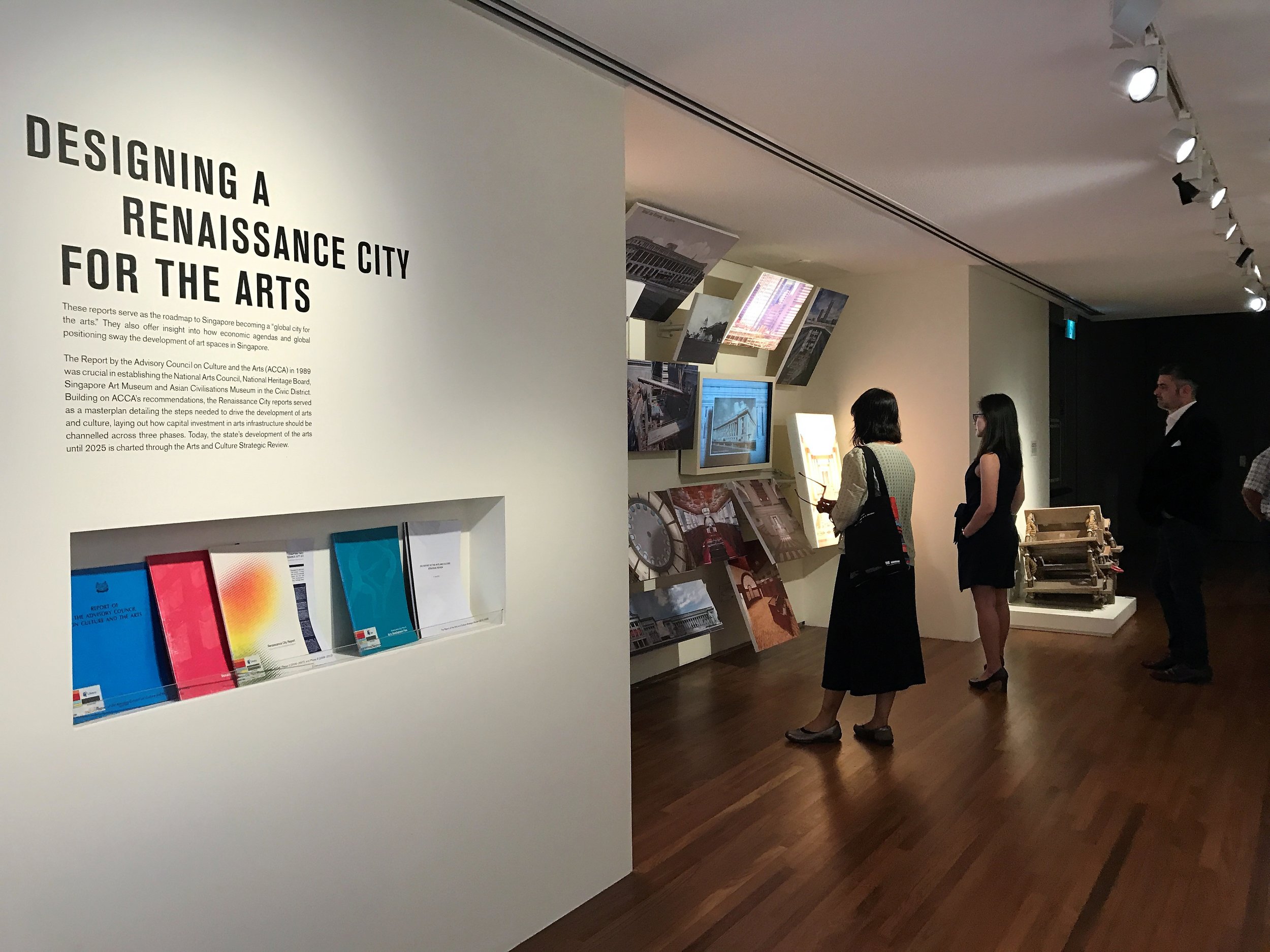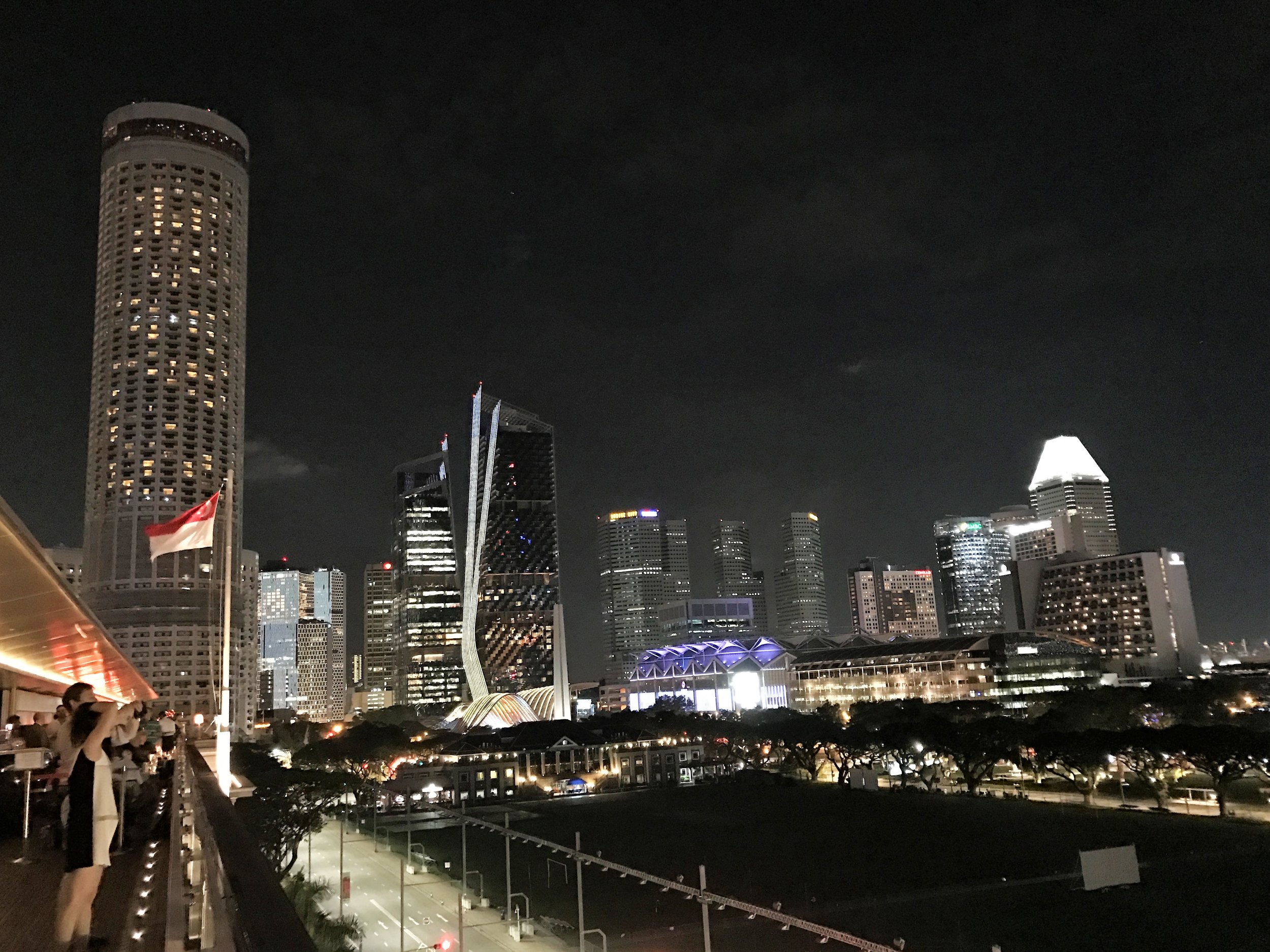by Agnes Lo
“For I suppose there is no institution more ancient and going back further back into the past, than our British conception of justice and rule of law – the government of the people through the law of the land, administered in open courts under the eyes of all, so that impartiality may be apparent and so that any defects in the law may become manifest and reformed.” - Chief Justice Percy McElwaine (as he then was), at the Supreme Court foundation stone ceremony, 1 April 1937.1
The time capsule containing six Singapore newspapers dated 31 March 1937 and a handful of Strait Settlement coins were buried beneath the foundation stone, only to be retrieved in the year 3000. The foundation stone can be located at the Supreme Court Wing, Level 1 (exactly under the centre of the dome).
The former Supreme Court Building is perhaps the most handsome and majestic of the historic buildings in Singapore, rivalling the best of the classical buildings built by the British in the Commonwealth. Constructed between 1937 and 1939, this iconic building topped by a distinctive big oxidised green copper dome, housed Singapore’s highest Court for more than 60 years until 2005. The former Supreme Court was gazetted a National Monument of Singapore on 14 February 1992.2
A. The Tympanum
Many would agree that the most professionally meaningful symbol of the building is the triangular feature - tympanum - on the pediment visible below the cupola. Designed by Milanese sculptor Cavelieri Rudolfo Nolli, the tympanum constituted an eloquent allegory of justice, which as officers of the Court, we are committed to uphold - the legal principle that “all are equal before the law”. In the tympanum, there is the central figure of Justice holding scales and a sword; two legislators holding books in their hands representing the Law are on one side of Justice and figures representing the People, are on the other side.
B. National Gallery Singapore
Following from an ambitious ten-year renovation process, the former Supreme Court Building is now united with the former City Hall as a house of Southeast Asian Art and renamed the National Gallery Singapore. Aspiring architects would be thrilled to witness the intricately re-created architectural model of the gallery (Concourse, Level B1). It shows a fascinating cross-section of the two neo-classical monuments and showcases the complexity of the gallery’s extensive design to gain insights into the challenges of integrating old and new architectural elements and explore the seemingly labyrinth corridors at a single glance.
Take this opportunity to walk through the newly opened ArchiGallery (City Hall Wing, Level 4) to relive the momentous events that took place within these walls: the Japanese surrender ceremony in 1945, the inauguration of Yusof bin Ishak as Yang-di Pertuan Negara (Head of State) in 1959 and the Singapore’s Proclamation of Independence in 1965.3
C. Listening to Architecture: The gallery’s histories and transformation
Listening to Architecture is the first exhibition to be housed at the ArchiGallery. It features two galleries and a walkway, and invites you to think of architecture as a conversation between different generations that develop over time.
Explore ArchiGallery 1 to learn about the enduring histories of the site and the architectural plans of the two buildings which once represented the power of the British colonial government.
Many famous cases were heard in this building, and perhaps the most historic of all is the war crime trials of members of the Japanese military in 1946. While you are here, do browse through the two journal articles written by our home-grown academic, Dr Cheah Wui Ling and Professor David J Cohen, on how the Singapore War Crime Trials present legal issues that are of particular relevance for the lower- level prosecutions and its relevance in today’s international criminal law debates. You may locate bound copies of these articles in the drawers underneath the reading table (ArchiGallery 1) Archaeological artefacts from the Yuan Dynasty can also be found in this gallery.
The linkway between the galleries provides an interactive 360 degree virtual tour of the main dome and the prisoner’s passage way, which are public-restricted areas of the buildings.
ArchiGallery 2 brings you through a timeline of the building’s historic moments: from the idea of a national gallery of the art was first mooted in 1957 to the making of the National Gallery Singapore we see today as part of the government’s Renaissance City Plan in 2000.
D. Law of the Land: Highlights of Singapore’s Constitutional Documents
While at the gallery, do visit the Law of the Land: Highlights of Singapore’s Constitutional Documents exhibition (Supreme Court Wing, Level 3, Chief Justice’s Chamber & Office) to indulge yourself in the rich history of Singapore’s constitutional development from its founding as a British settlement in 1819 to its emergence as a sovereign republic in 1965.
Discover rare documents from the collections from the National Archives including the original copy of the Third Charter of Justice, 1855. This document affirmed the reception of English law in Singapore and provided the settlement with its own professional judge (then known as a recorder). You will also find printed on paper and parchment, with gold leaf accents and brightly coloured flower motifs, the documents proclaiming Singapore’s merger with Malaya embodied the hope in the air in 1963, as well as the draft agreement relating to the separation of Singapore from Malaysia as an independent and sovereign state, dated 7 August 1965.4
E. What else?
It is highly recommended that you cap the evening with a visit to the rooftop bar at the City Hall Wing (via the link bridges at levels 3 and 4) to enjoy magnificent panoramic views over the Padang and Marina Bay, while taking in the majestic presence of the dome over some drinks.
Opening Hours
Sun – Thu, Public Holidays: 10am – 7pm
Fri- Sat, Eve of Public Holidays: 10am – 10pm
Admission
Free entry for Singaporean & PRs
Standard ticket for non-Singaporean: $20 (Concessions available)
[1] Sir Percy Alexander McElwaine was the Chief Justice of the Strait Settlements for 1936 – 1946.
[2] William Wan, “Down Memory Lane: Memories of the Old Supreme Court”
<http://www.lawgazette.com.sg/2015-08/1367.htm> (accessed 14 July 2017)
[3] National Gallery, “The Gallery Guide Apr- June 2017”
<https://www.nationalgallery.sg/sites/default/files/2017-GALLERY_QUARTERLY_APR_JUN_2017-Digital.pdf> (accessed 14 July 2017).
[4] “In Pictures: Singapore’s constitutional documents at the National Gallery”
<http://www.straitstimes.com/multimedia/photos/in-pictures-singapores-constitutional- documents-at- the-national-gallery> (accessed 14 July 2017).
Click here for more news.

